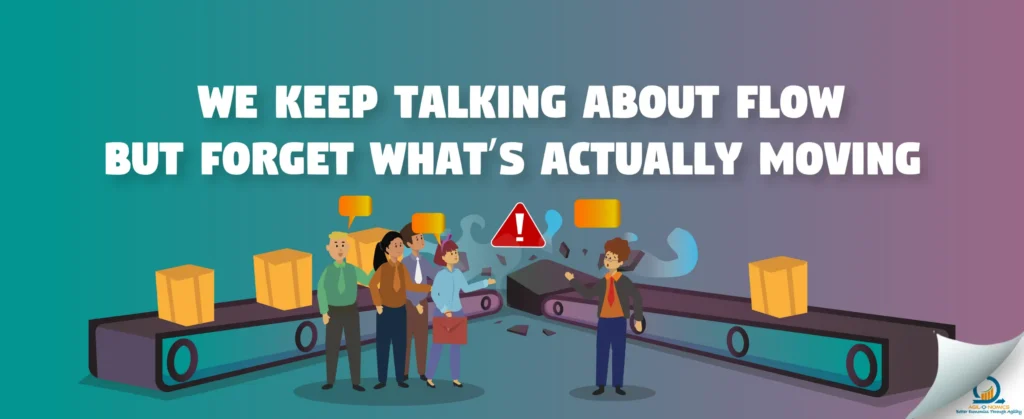
In today’s fast-paced world of project management, everyone talks about flow. Teams map it, measure it, and optimize it. Leaders want smoother handoffs, fewer bottlenecks, and faster cycles. But amid the obsession with flow efficiency, we often forget to ask one essential question: what’s actually moving through the system?
Because flow, by itself, means nothing if what moves is not valuable.
We can streamline processes, automate transitions, and visualize progress all we want — but if the work lacks meaning, if the outcomes don’t connect to real needs, we’re simply getting better at moving noise.
When Flow Becomes the Goal
Flow was never meant to be the goal. It was a signal — a reflection of how healthy a team’s delivery system is. But in many organizations, flow has become an end in itself. Teams race to optimize metrics like throughput or cycle time without stopping to reflect on whether what’s flowing is valuable in the first place.
It’s like polishing a conveyor belt without checking what it’s carrying.
Flow is not progress when it’s full of low-impact work. Yet that’s what often happens when success is defined by movement rather than meaning. We celebrate speed, but not substance. We track velocity, but not value. And in the process, we lose sight of why we built these systems at all.
Supercharging Teams Through Meaningful Movement

To supercharge teams, leaders need to reconnect flow with purpose. The healthiest flow systems don’t simply move tasks efficiently — they move outcomes that matter. That means work should flow through teams that understand context, customers, and priorities.
AI and automation can help, but they must enhance decision-making, not replace it. Smart systems can flag delays, surface dependencies, and help teams visualize value streams. Yet technology alone cannot decide what deserves to move first.
That’s where leadership comes in. Leaders define the “why” behind the work. They help teams see how each delivery connects to a broader mission. When teams move with that clarity, the flow stops being mechanical — it becomes meaningful.
A Process That Works Because People Care
A process that works is not the one that moves fastest — it’s the one that moves purposefully. Tools and frameworks can help standardize how work moves, but they should never dictate why it moves.
To build processes that truly work, organizations must:
- Define value clearly. Teams need to know what success means in human terms, not just in metrics.
- Align flow with purpose. Every step in the system should contribute to something meaningful.
- Balance automation with awareness. AI can optimize flow, but humans must interpret what’s worth optimizing.
- Reflect regularly. Don’t just measure speed — measure significance.
When people understand what’s actually moving, flow transforms from a mechanical process into a human-centered one. It becomes a shared commitment to move things that matter.

Technology, Tools, and the Illusion of Progress
Today’s tools give an incredible illusion of progress. Dashboards show motion everywhere — charts trending up, boards clearing out, reports showing completion. Yet the truest measure of progress is not the number of items moved, but the impact of what was delivered.
AI-driven tools can help reveal this balance by linking work movement to outcomes. They can identify patterns that show whether flow correlates with real customer value. When paired with human judgment, this becomes powerful. But when left unchecked, tools risk amplifying the wrong kind of movement — fast, impressive, and meaningless.
Flow That Matters
In the end, project management is not about perfect flow — it’s about purposeful movement. It’s about people who understand why their work matters and systems that make it easier to deliver that value.
Flow should never be a finish line. It should be a mirror — reflecting how clearly a team understands its purpose and how effectively it turns that purpose into delivery.
Because the real measure of success is not how fast things move. It’s what actually moves — and why.
This post combines the author’s personal thoughts, ideas, and experiences, with some refinement provided by our Agile Bot AgiNomi.

